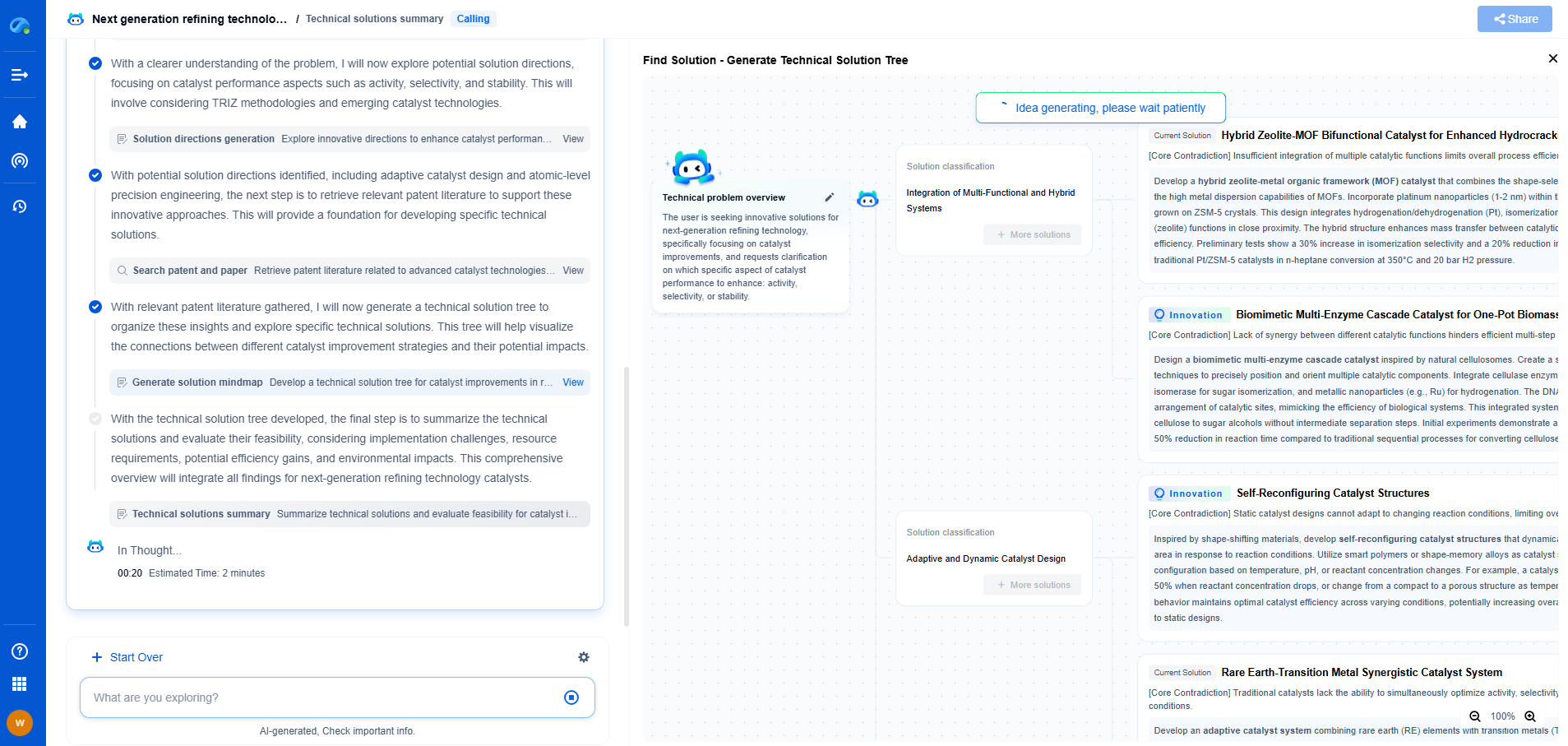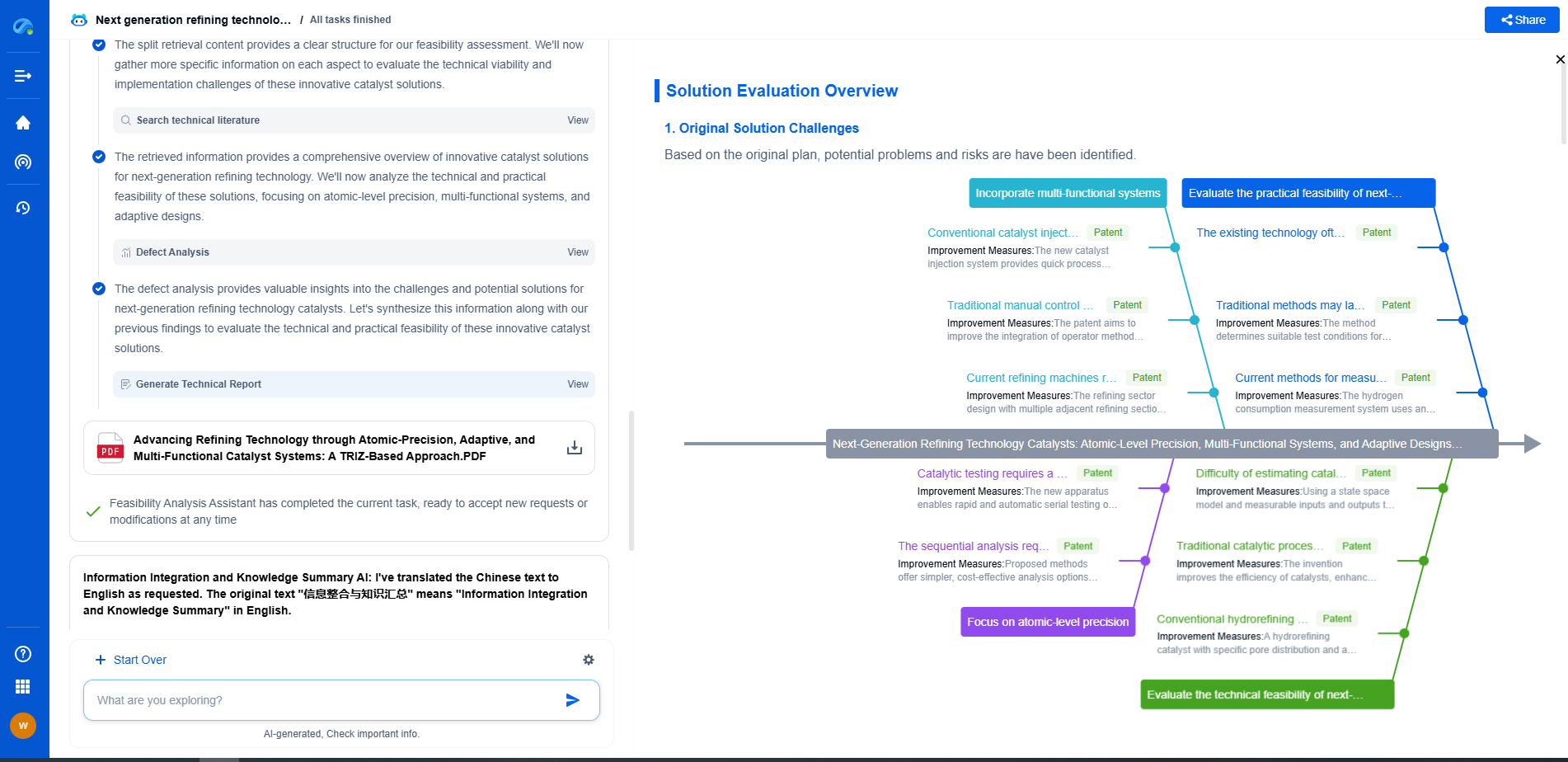Mitigating Thermal Lens Effects in High-Power Laser Systems
JUN 26, 2025 |
In the realm of high-power laser systems, thermal lensing is a common challenge that can significantly impact performance. When a laser beam passes through optical components, the heat generated can cause changes in the refractive index of the material. This phenomenon leads to the creation of a "thermal lens," which can distort the beam and result in loss of focus and efficiency.
The Impact of Thermal Lens Effects
The effects of thermal lensing are particularly pronounced in high-power laser applications where the intensity of the light is substantial. The thermal gradient induced in the optical medium causes a variation in the refractive index, leading to beam distortion. This distortion can degrade the beam quality, affect the accuracy of laser machining processes, and reduce the overall efficiency of the laser system. In precision applications, such as in industrial cutting or medical surgeries, maintaining beam quality is paramount, making thermal lens mitigation essential.
Methods for Mitigating Thermal Lens Effects
1. Material Selection
Choosing the right optical material is crucial in minimizing thermal lens effects. Materials with low absorption coefficients and high thermal conductivity are ideal as they dissipate heat more efficiently, reducing thermal gradients. Sapphire and fused silica are often preferred for their excellent thermal properties. Additionally, coatings can be applied to optical components to enhance their thermal performance.
2. Active Cooling Systems
Implementing effective cooling systems is another strategy to mitigate thermal lens effects. Active cooling systems, such as liquid cooling or air cooling, help maintain the temperature of optical components within a desired range. By controlling the temperature, the thermal gradient is minimized, thus reducing the thermal lens effect. In high-power laser systems, cooling systems are often integrated with other components to ensure continuous and efficient performance.
3. Adaptive Optics
Adaptive optics involves the use of deformable mirrors or other components to compensate for wavefront distortions. This technology allows real-time adjustment of the laser beam's path, counteracting the distortions caused by thermal lensing. Although adaptive optics can be complex and costly, it is highly effective in maintaining beam quality in dynamic environments where thermal lens effects are variable.
4. Beam Shaping Techniques
Beam shaping techniques can be employed to modify the intensity profile of the laser beam, reducing the impact of thermal lenses. Flat-top beam profiles, for instance, distribute energy more evenly, thereby minimizing peak intensity and associated thermal effects. Techniques like diffractive optical elements or spatial light modulators can help achieve the desired beam shape.
Future Directions in Thermal Lens Mitigation
Advancements in material science and optical engineering continue to provide new avenues for mitigating thermal lens effects. Research into novel materials with superior thermal properties and the development of more sophisticated cooling technologies promise to enhance the performance of high-power laser systems. Additionally, the integration of AI and machine learning in adaptive optics could allow for even more precise control and compensation of thermal lensing in real-time.
In conclusion, managing thermal lens effects in high-power laser systems is critical for maintaining performance and efficiency. By leveraging material selection, cooling systems, adaptive optics, and beam shaping techniques, it is possible to mitigate these effects and optimize laser applications across various fields. As technology advances, the tools and strategies for addressing thermal lensing will continue to evolve, ensuring that high-power laser systems can operate at their full potential.
Empower Electromagnetic Innovation with Patsnap Eureka
From high-frequency antenna arrays and electromagnetic shielding to plasma propulsion and wave-based energy transfer, the electromagnetic domain sits at the core of next-generation technologies. Yet navigating its vast landscape of patents, research papers, and evolving technical standards can be time-consuming and complex.
Patsnap Eureka, our intelligent AI assistant built for R&D professionals in high-tech sectors, empowers you with real-time expert-level analysis, technology roadmap exploration, and strategic mapping of core patents—all within a seamless, user-friendly interface.
👉 Experience Patsnap Eureka today and transform how your team navigates the complexity of electromagnetic innovation.
- R&D
- Intellectual Property
- Life Sciences
- Materials
- Tech Scout
- Unparalleled Data Quality
- Higher Quality Content
- 60% Fewer Hallucinations
Browse by: Latest US Patents, China's latest patents, Technical Efficacy Thesaurus, Application Domain, Technology Topic, Popular Technical Reports.
© 2025 PatSnap. All rights reserved.Legal|Privacy policy|Modern Slavery Act Transparency Statement|Sitemap|About US| Contact US: help@patsnap.com

